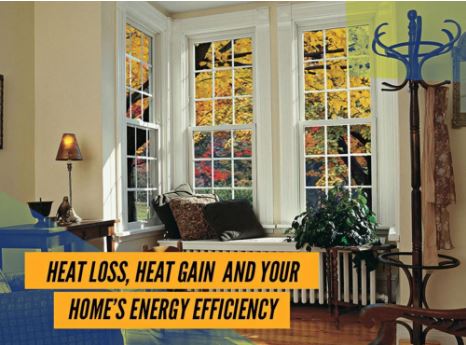MENU


If you’ve been looking into buying replacement windows in Cincinnati to make your home more energy efficient, you’ve probably come across the terms “heat loss” and “heat gain.” In today’s blog, we explain what these terms mean and the role they play in your home’s energy efficiency.
Indoor heating consumes as much as 42% of a typical home’s monthly energy bill on average. Homes with inefficient insulation tend to lose heat faster, which increases the need for indoor heating systems to compensate. The more heat your heating system pumps out, the more energy is consumed. If your energy bills tend to be significantly higher in the winter, then your home may be suffering from excessive heat loss.
Windows are a common culprit when it comes to heat loss, which mainly occurs through the glass, a conductive material. Heat can also leak through the gaps between the sash and frame. Also, if the windows are not properly installed, heat can escape through the gap between the frame and window opening. Fixed window styles (i.e., those that can’t be opened) like picture windows and specialty windows are less prone to heat loss due to their lack of sashes.
On hot days, heat transfers through the windows from the outside. This is because heat always moves toward cooler places. While air conditioning doesn’t cost as much as heating, it is not a negligible part of the monthly energy bill. In addition to the ambient heat, sunlight introduces heat gain through infrared rays, which can enter your home through the glass in your windows, even if you have insulated dual-panel designs.
Renewal by Andersen® offers replacement windows with features that counter both heat loss and heat gain. Starting with the glazing, our High-Performance™ Low-E4® glass features a dual-panel design that virtually eliminates contact between interior and exterior surfaces, minimizing conduction. It also has low emissivity (Low E) coatings that block unwanted infrared and UV rays without sacrificing day lighting.
Our Fibrex® material frames – a composite of wood fibers and polymer – are also extremely well insulated. Our precise installation process ensures the areas around the windows are perfectly sealed. All Renewal by Andersen replacement windows are ENERGY STAR®-certified, and can help reduce your monthly energy bills significantly.
To learn more about our energy-efficient window styles like bay windows, call Renewal by Andersen of Cincinnati today at (866) 609-5033 or fill out our contact form to schedule a free, no-hassle consultation. We serve many areas in and near Mason, Sharonville and Loveland, OH.